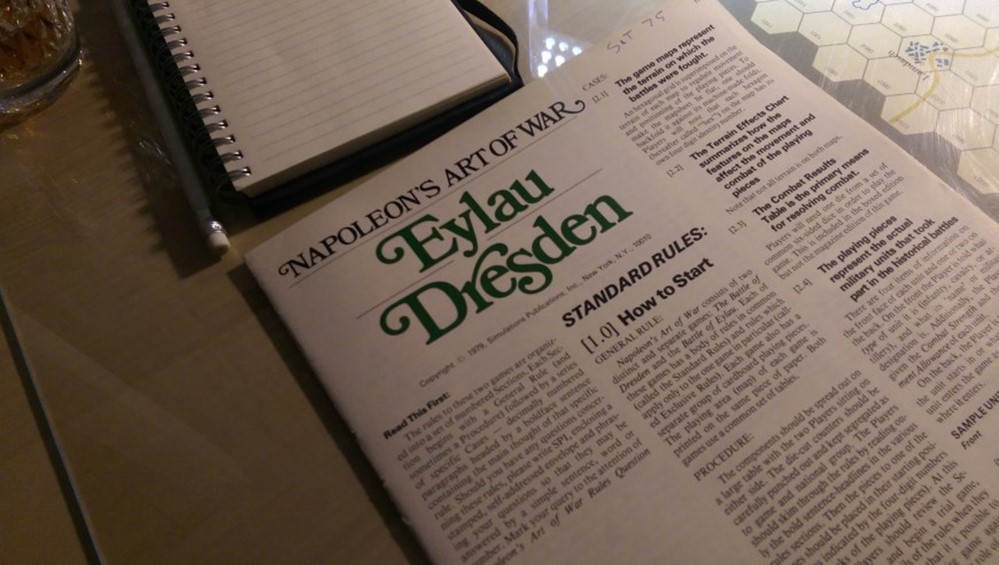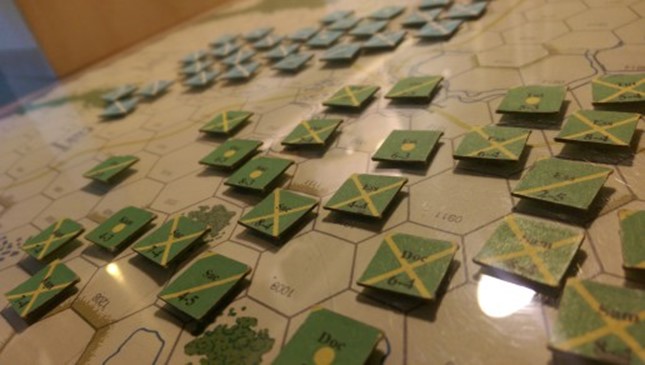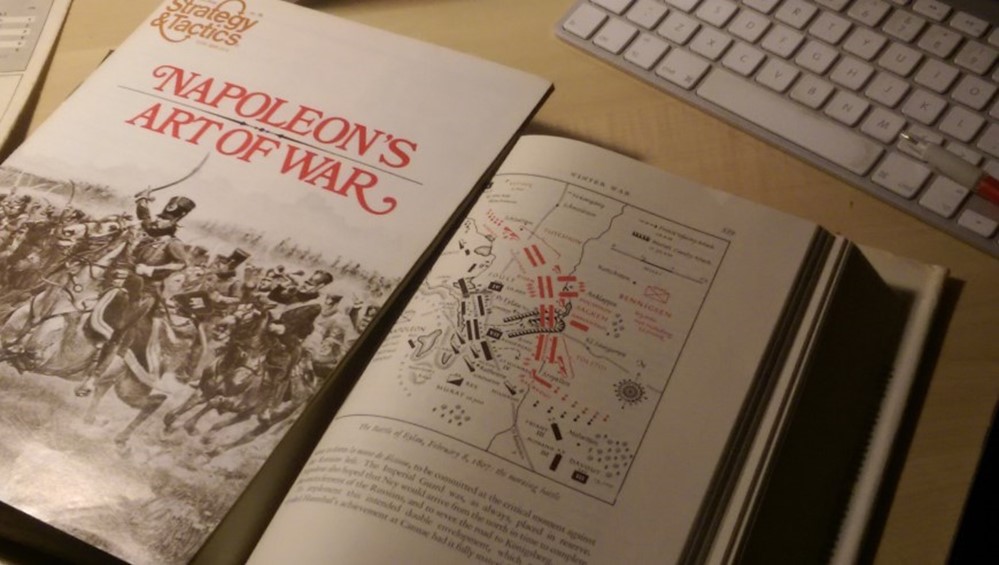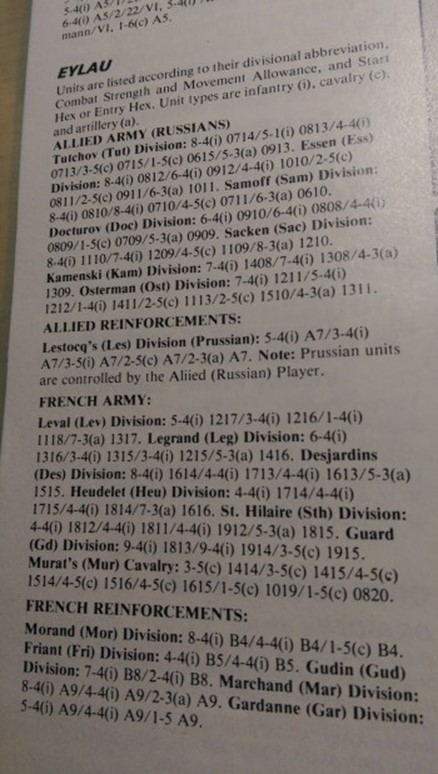Eylau Nappy Art of War! Part 1. [SPI]

Napoleon’s Art of War system. Simple, and pretty fast playing. Except if you are me!
It took a bit to sort out the impact of Arty, the way the CRT ‘really’ worked and the quirky reverse results for period/battle flavour. Which due to historically horrid weather caused battles to become very confused in this battle.
Battle Description:

The Battle of Eylau or Battle of Preussisch-Eylau, 7 and 8 February 1807, was a bloody and inconclusive battle betweenNapoléon’s Grande Armée and a Russian Empire army under Levin August, Count von Bennigsen near the town of Preußisch Eylau in East Prussia.[4] Late in the battle, the Russians received a timely reinforcement from a Prussian division.
The town is now called Bagrationovsk and it is a part ofKaliningrad Oblast, Russia. The engagement was fought during theWar of the Fourth Coalition, part of the Napoleonic Wars. Of all Napoleonic battles, this is considered to be the most uncertain and mysterious for several reasons — mainly the strength of Murat’s reserve cavalry.
Napoleon’s armies previously smashed the army of the Austrian Empire in the Ulm Campaign and the combined Austrian and Russian armies at the Battle of Austerlitz on 2 December 1805. Austerlitz forced the Austrians to sue for peace and their Russian allies to withdraw from the conflict. On 14 October 1806, Napoleon crushed the armies of the Kingdom of Prussia at the Battle of Jena-Auerstedt.
After a rapid pursuit, the broken pieces of the Prussian army were destroyed at the Battles of Prenzlau andLübeck and in a series of capitulations at Erfurt, Pasewalk, Stettin, Magdeburg, andHamelin. Eylau was the first serious check to the Grande Armée and the myth of Napoleon’s invincibility was badly shaken. However, in 1807 the dramatic defeat of the Russian forces at Friedland allowed Napoleon in 1812 to march towards Moscow almost uncontested.
In late January, Bennigsen’s Russian army went on the offensive in East Prussia, pushing far to the west. Napoleon reacted by mounting a counteroffensive to the north, hoping to prevent their retreat to the east. After his cossacks captured a copy of Napoleon’s orders, Bennigsen rapidly withdrew to the northeast to avoid being cut off.
The French pursued for several days and found the Russians drawn up for battle atEylau. In a vicious evening clash, the French captured the village with heavy losses on both sides. The following day brought even more serious fighting. Early in the battle, a frontal attack by Napoleon failed with catastrophic losses.
To retrieve the situation, the emperor launched a massed cavalry charge against the Russians. This bought enough time for the French right wing to throw its weight into the contest. Soon, the Russian left wing was bent back at an acute angle and Bennigsen’s army was in danger of collapse. A Prussian corps belatedly arrived and saved the day by pushing back the French right wing.
As darkness fell, a French corps tardily appeared on the French left flank. That night Bennigsen decided to retreat, leaving Napoleon in possession of a snowy battlefield covered with thousands of corpses and many more wounded.

On to our version of these events see part two shortly.